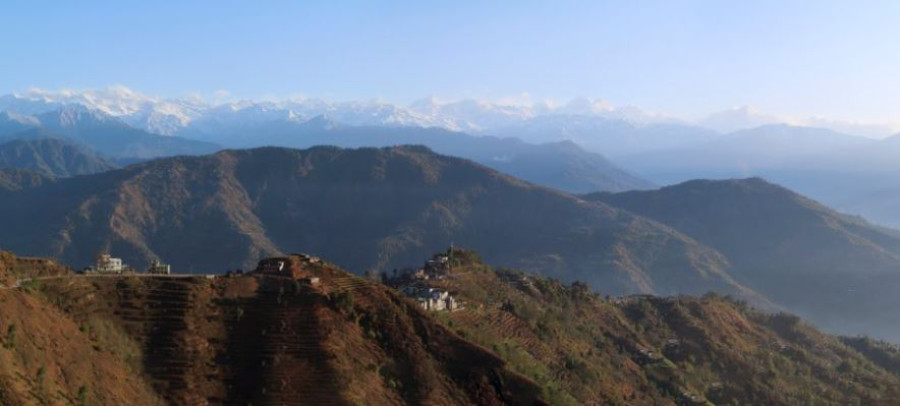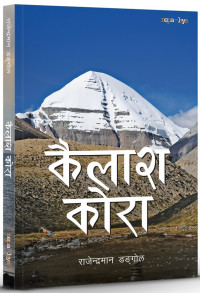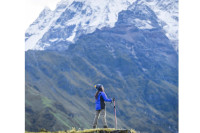Travel
Just a two-hour drive from Kathmandu, Bhotechaur offers better views than those from Nagarkot or Dhulikhel
But things got better once I reached Jarsing Pauwa, which is 7 kms from Sankhu. From Jarsing Pauwa, the road narrowed and the vistas got more scenic. There were deep valleys, hills with vertigo-inducing terraced fields, and beautiful hillside cottages of all colours. From Chowki Bhanjyang to Bhotechaur, there were more hills and more terraced fields, which from afar looked like they had been stacked on top of each other.
Tsering Ngodup Lama
By the time I reached Sankhu, my shoes looked like they were made of mud. My motorbike’s engine and its tires too were coated with several inches of mud, and in a remote corner of my mind, I wondered about the wisdom of my decision to travel to Bhotechaur for a quick getaway.
The night before, it had rained for hours, which had turned the road from Boudha to Sankhu into everything you don’t want a road to be. By the time I reached Sankhu, my motorcycle had waded into several potholes of varying depth—from a few inches to a foot of muddy water. My motorbike had almost slipped twice on a notoriously slippery stretch from Thali to Sankhu.
But things got better once I reached Jarsing Pauwa, which is 7 kms from Sankhu. From Jarsing Pauwa, the road narrowed and the vistas got more scenic. There were deep valleys, hills with vertigo-inducing terraced fields, and beautiful hillside cottages of all colours. From Chowki Bhanjyang to Bhotechaur, there were more hills and more terraced fields, which from afar looked like they had been stacked on top of each other.
For the unaware, Bhotechaur is a small town—around 40 kms from Kathmandu—in Sindhupalchowk district. It’s most famous landmark is the Everest Tea Estate, which lies to the north of the town’s main bazaar, and is spread over several hundred ropanis of land. On a clear day, the mountain views from the town are known to be much better than from Nagarkot or Dhulikhel.
From Bhotechaur, I took a winding road to Jyotish village and headed to the entrance of the tea estate. Midway, on a stretch of gravelled road that leads to the estate, I was stopped by one of the estate’s cheerful security guards. The estate, said the guard, has been closed to visitors for more than two years, but is likely to reopen soon. A few more motorists who came after me were also stopped by security guards and politely asked to return. I was tired from the ride, and chose to mill around and talk to the villagers. Out of nowhere, it started hailing.

The security guards suggested that we all take shelter at a nearby tea shop. I asked the villagers to join, and they agreed. So, inside a tea shop built entirely out of corrugated tin, we sat, as hail noisily clattered on the shop’s roof. I ordered tea for everybody. The villagers and the guards settled for milk tea, and Saraswati Khatiwada, the owner of the tea shop, suggested I go for green tea, which she told me, she grows and makes herself.
My green tea is special, she said. Two to three times a year, Saraswati plucks tea leaves from the 30-odd tea plants that she grows around her house, and makes green tea. The entire process from drying to rolling is done by hand.
The green tea, which was served steaming hot, tasted like spring. It was fresh with a hint of fruitiness. As cups of steaming tea came in, the topic of conversation shifted from the earthquakes of 2015 to the future of the country to challenges faced by villagers in protecting their crops from animals from the neighbouring Shivapuri National Park.
“A few years ago, it was wild boars that wreaked havoc on our fields. They would dig up everything, from potatoes to radish. The number of wild boars has reduced, but it’s now monkeys that do the most damage,” says Chiranjivi Khatiwada, a 60-year-old local. “We’ve also seen deer and porcupine, both of whom love corn plants.”
The majority of what the villagers grow in our fields is overrun by animals, leaving them with very little, says Khatiwada. The villagers don’t want to farm anymore but a new government rule that imposes fines for leaving arable land fallow means that they will need to continue farming, even if wild animals get most of the produce.
The clatter on the tin roof stopped—the guards left to man their post and the villagers returned to their homes. I promised Saraswati that I’d return to her shop for more green tea, and headed back to my hotel, which was a 10-minute ride from the tea estate.
The views from the hotel were spectacular. On the day I checked in, the sight of the distant rolling hills made me feel giddy with happiness, but it was the view the next morning that left me transfixed. Thanks to the heavy rain the day before, the sky was unbelievably blue and clear, and before me stood a 180-degree view of snow-draped mountains, which included Ganesh Himal, Jugal Himal and Dorje Lakpa, among others.
I spent most of the morning hiking to the nearby hilltop village of Jhule, from where the mountains looked much closer. From the village, I spent hours languorously watching clouds lift from the many valleys below and slowly obscure the distant Himalayas. The only sounds were of birds chirping and a stray bhote kukkur pup whimpering. The pup had tagged along with me on the hike.
At noon, I headed back to Kathmandu. A few kilometres from the hotel, I stopped my motorbike—which was still covered in mud—at a sharp bend to take a one last look at the mountains, and in a remote corner of my mind, I already started noticing a strong urge to return soon.
Rooms at Heaven Hill Resort in Deurali danda in Bhotechaur start at Rs 1,500 and meals are reasonably priced. Contact: 9849890580




 12.12°C Kathmandu
12.12°C Kathmandu










